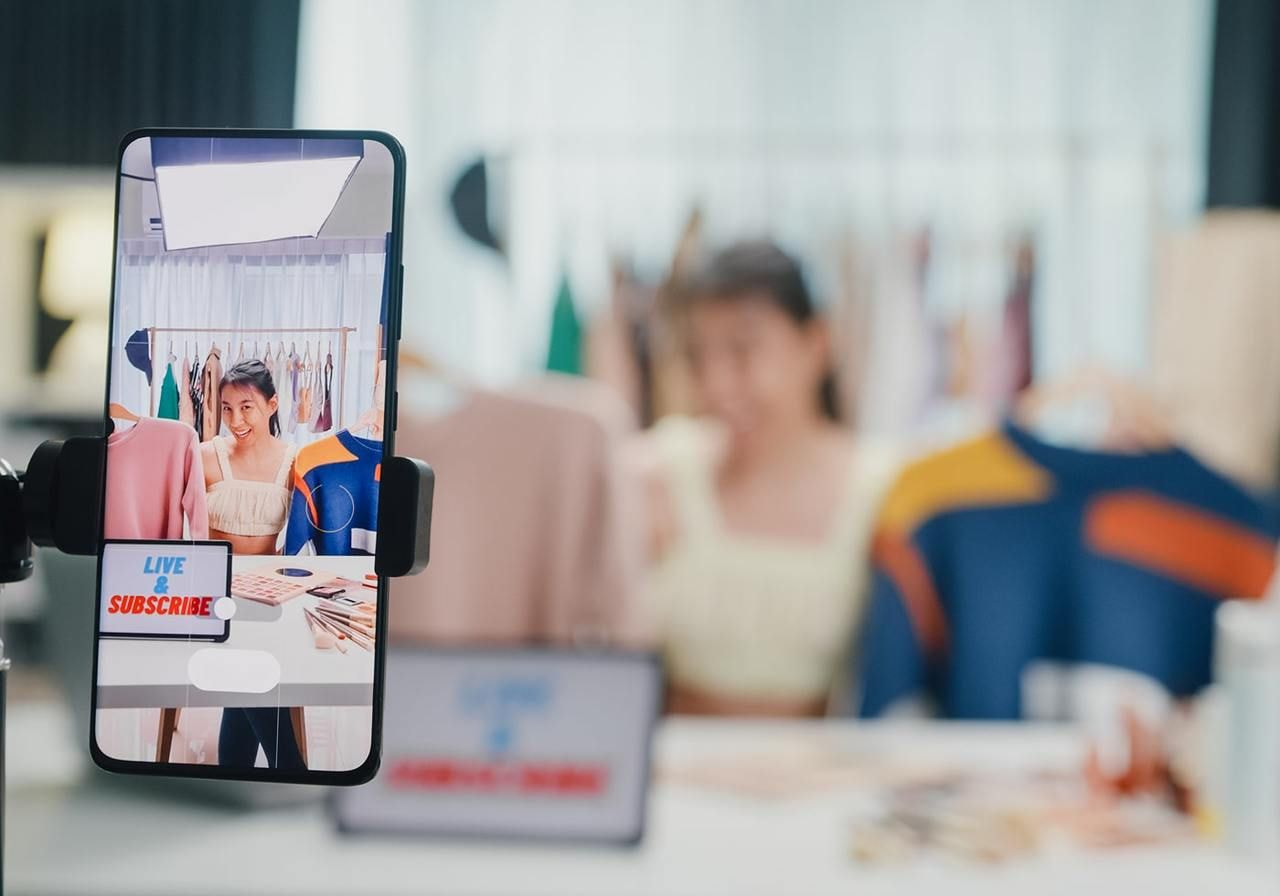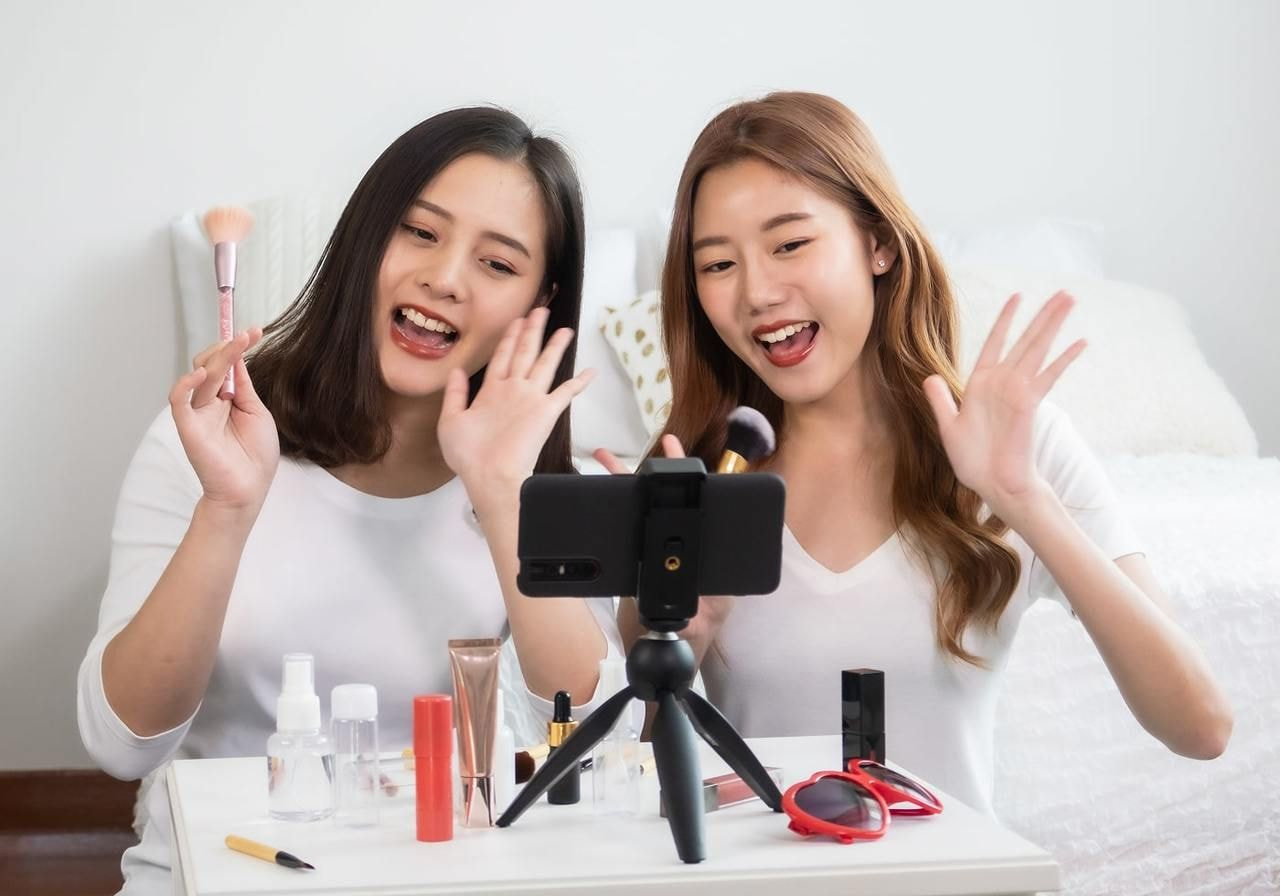Table of contents
Black Friday is the Super Bowl of eCommerce – loud, competitive, and full of bold ads. This guide spotlights real Black Friday marketing campaigns that broke through the noise.
From flash sales and email marketing to creative Black Friday campaigns like Patagonia’s anti-sale stunt or Glossier’s VIP event, you’ll find the exact strategies, examples, and steps to make your next sale season your biggest yet.
Key takeaways
The smartest Black Friday campaigns focus on creativity, not chaos. Purpose and storytelling outperform noise.
A bold Green Friday campaign like Patagonia’s can raise awareness and build long-term loyalty.
Authentic, community-driven Black Friday ads connect better with younger audiences than hard-sell tactics.
Mixing digital and traditional marketing trends – from social media to printed inserts – maximizes reach and retention.
Personalization and exclusivity keep loyal buyers engaged while attracting new ones.
Preparing for Black Friday
Before the holiday shopping season hits, you need to prepare your online store to attract customers and convert traffic into sales. Every detail counts, from the products you choose to how your site performs under pressure. And the pressure is on, as November 28 is approaching oh so quickly.
1. Start with research and product selection

Every great Black Friday campaign starts with solid data. Study what your competitors are offering and what your audience actually buys. Use tools like Google Trends, SEMrush, and Ahrefs to spot what’s trending in your niche.
Here’s how to fine-tune your selection:
-
Review last year’s sales – Identify bestsellers and underperformers from previous Black Friday deals.
-
Track customer behavior – See what items people add to carts but don’t buy. Offer limited-time discounts on those.
-
Test new products early – Use small ads or influencer reviews to see what resonates before the shopping event begins.
Your goal is to curate your brand’s holiday discounts so they’ll attract both loyal fans and new customers, whether they shop online or in-store.
2. Prepare your creative assets
Good deals don’t sell themselves – sharp visuals and strong messaging do. Before the rush, organize all your creative materials: ads, banners, emails, and landing pages.
Tips for creative prep:
-
Design cohesive branding – Use matching fonts, colors, and messaging across social, email, and in-store campaigns.
-
Build Black Friday landing pages – Tools like Canva, Figma, or Adobe Express can help you craft visuals fast.
-
Personalize email flows – Segment your audience by interest or purchase history, then tailor Black Friday deals accordingly.
-
Use countdowns and urgency – Add timers to your website or email marketing campaigns to create anticipation.
Consistency builds trust. When your design and message align across channels, customers instantly recognize your brand and feel confident buying during the shopping event.
3. Build buzz ahead of the season

Don’t wait until November to talk about your Black Friday deals – start early. Building hype makes your audience feel like insiders waiting for something special.
Ways to raise awareness and build momentum:
-
Tease your campaign early – Post cryptic visuals, launch countdowns, or drop hints in stories.
-
Create early opt-ins – Offer sneak peeks or early access to new customers who subscribe before launch.
-
Collaborate with influencers – Use social proof to reach fresh audiences and drive online purchases.
-
Run social media ads – Platforms like Meta Ads or TikTok Ads Manager are perfect for A/B testing visuals and headlines ahead of your launch.
This pre-launch stage can make or break your results. When Black Friday shoppers are already excited, they convert faster and buy more once your campaign drops.
4. Test everything
Before the big day, run through every part of your store like a customer. Black Friday shoppers won’t wait for pages to load or broken links to fix themselves.
Your testing checklist:
-
Stress-test your site – Use tools like Google PageSpeed Insights or GTmetrix to ensure your store can handle traffic spikes. If your current setup slows down under load, consider upgrading your hosting and taking advantage of the early Black Friday hosting deals.
-
Run test transactions – Double-check payment gateways and coupon codes for your brand’s holiday discounts.
-
Simulate support load – Prepare FAQs and automated responses using tools like Zendesk or Tidio.
-
Optimize checkout flow – Reduce clicks to purchase, simplify forms, and make it mobile-friendly.
A flawless technical setup ensures a smooth shopping event for both loyal and new customers. Every second saved in checkout can mean dozens of extra sales.
11 Black Friday marketing campaign strategies for success

Great Black Friday campaigns start weeks ahead, long before the digital chaos of the holiday season begins. This section breaks down proven marketing strategies to attract your target audience, maximize Black Friday promotions, and turn hesitant shoppers into repeat buyers.
1. Deep discounts, doorbusters, tiered savings
Nothing drives conversions faster than significant discounts backed by smart psychology. Tiered savings – like 10% off $50, 20% off $100, 30% off $200 – encourage larger carts and help potential customers justify spending more.
Add limited doorbusters to build urgency and feature your best deals front and center on your online store. Include clear messaging around delivery cutoffs so shoppers feel confident buying gifts early.
Transparency, urgency, and a great deal are the trifecta that turns browsers into buyers during Black Friday weekend.
2. Product bundles and buy-one-get-one (BOGO) deals
Bundling simplifies decision-making and lifts average order value – perfect for the holiday season when shoppers want convenience.
-
Create themed bundles or BOGO offers that align with your brand values, like eco-friendly or handmade sets.
-
Add exclusive deals for subscribers or loyalty members to make your offer stand out from other Black Friday sales.
-
Include small free gifts or accessories to make every purchase feel personal and premium.
Clearly label bundles as “limited-edition sets” to create urgency and encourage customers to act fast before stock runs out. This combination of exclusivity, added value, and time pressure turns casual browsers into confident buyers ready to check out now.
3. Early access and scarcity tactics
Give loyal customers priority access to Black Friday discounts through VIP emails or text alerts. Scarcity works best for hesitant shoppers. Use countdown timers, limited stock messages, and surprise drops.
Tools like Klaviyo or Omnisend make it easy to automate early-bird flows and reward subscribers ahead of the rush. Early hype means you’ll capture attention before competitors flood inboxes.
4. Sharpen your email templates

Your Black Friday email marketing should feel bold, human, and built for speed. Keep subject lines short (“Ready. Set. Save.”), use emojis sparingly, and test different tones for your target audience.
Add urgency in the preview text (“Ends tonight ⏰”) and stick to one strong CTA per message.
-
Example 1 – The “Gen Z drop alert.” Send a short, punchy email featuring TikTok-style graphics or memes announcing limited-time deep discounts. Pair it with a countdown timer and UGC visuals from your community. Gen Z readers respond to authenticity, humor, and visuals that look native to their feeds.
-
Example 2 – The “VIP cart reminder.” For loyal subscribers, send an elegant, minimal design with their wishlist items already shown and a one-click checkout button. Add a personal note like “We saved this for you.” It feels exclusive, builds brand loyalty, and keeps your Black Friday campaigns personal in a crowded inbox.
5. Adjust email send-out frequency
Your timing strategy matters. Begin with teaser campaigns weeks ahead to warm up subscribers, then ramp up frequency as the holiday campaign nears. Hit inboxes multiple times during Black Friday weekend, with “final chance” messages before midnight, but be sure not to spam them.
Afterward, scale back with customer retention emails focused on thank-yous and an extended Black Friday returns window.
6. Segment your audience for tailored deals
Data turns good Black Friday campaigns into great ones – but only if you know how to use it. Start by grouping customers based on their behavior and intent.
Most eCommerce platforms and email tools make this easy:
-
New shoppers – Target them with welcome discounts or starter bundles. In Klaviyo, create a “First Purchase” flow offering 10% off their first Black Friday sale item.
-
Repeat buyers – Reward them with early bird access or exclusive bundles. Highlight loyalty perks like double reward points or sneak peeks.
-
High spenders – Offer them exclusive gifts or VIP shipping upgrades to increase average order value.
-
Abandoned cart users – Send limited-time Black Friday discounts to pull them back. Use urgency-driven emails with countdown timers.
-
Lapsed customers – Re-engage them with “We miss you” campaigns featuring fresh holiday discounts or trending products.
Platforms like Shopify Email, Klaviyo, and Mailchimp let you automate these flows so each customer receives the right message at the right time.
Tailored campaigns improve customer retention and lift conversion rates across your Black Friday campaign – because people respond to offers that feel personal, not generic.


7. Mix marketing channels

A single channel won’t carry your Black Friday campaigns.
Combine these tools to reach your target audience wherever they scroll, shop, or search:
-
Email
-
Social media
-
Search ads
-
Retargeting
Start weeks ahead by teasing your Black Friday promotions on Instagram and TikTok, then back them up with paid ads on Google and Meta to capture high-intent, potential customers.
Add SMS reminders for flash sales, push notifications for app users, and retargeting ads to re-engage cart abandoners. If you have physical stores, mirror your Black Friday campaign offers to drive in-store traffic and boost local visibility.
For the most impact, run cross-platform testing with Google Performance Max, Meta Ads Manager, or Klaviyo SMS to measure what converts best.
Consistency across all touchpoints reinforces your brand values, keeps your online store top of mind, and delivers a seamless experience that converts one-time Black Friday shoppers into long-term customers.
8. Use influencer marketing to build trust

Influencer partnerships turn your Black Friday campaigns from ordinary to magnetic – because people trust people more than ads. To make it work, you need the right partners, the right format, and the right timing.
How to find them:
-
Search niche creators on Instagram, TikTok, and YouTube who already talk about products like yours. Tools like Upfluence, Collabstr, or even TikTok Creator Marketplace help you filter by engagement rate, location, and audience demographics.
-
Prioritize micro-influencers (10K – 100K followers). They cost less but often drive higher engagement and stronger brand loyalty.
Where to collaborate:
-
Unboxing and haul videos – Creators can showcase your best Black Friday deals in real time, linking directly to your online store.
-
Countdown stories or reels – Use influencers to tease upcoming exclusive gifts and limited-time holiday discounts to build anticipation.
-
Livestream events – During the Black Friday weekend, co-host short live sessions where influencers demonstrate products and answer audience questions.
When done right, influencer marketing amplifies your Black Friday promotions far beyond what paid ads can achieve – turning attention into trust, and trust into sales.
9. Adjust your checkout page during sales
A messy checkout kills momentum. Keep it short, clean, and mobile-friendly.
-
Show total costs upfront.
-
Combine this with free shipping thresholds (“Spend $75 and get free shipping”) to nudge higher order values without hurting your margins.
-
Add trusted payment options like PayPal, Apple Pay, or Klarna.
-
Use a progress bar so shoppers know how close they are to completing their Black Friday sale order.
-
Highlight shipping timelines and extended holiday returns to reduce friction.
Highlight free gifts or last-minute add-ons before checkout to boost average order value. Speed and clarity win every time.
10. Automate customer service for basic issues
During this shopping festival, customer support can drown in repetitive questions. This is where automation – especially AI – saves time and sanity. Use tools like Zendesk AI, Gorgias, or Tidio to manage FAQs, returns, and tracking updates automatically.
AI assistants like ChatGPT can help you create conversation flows and write smart replies that sound human.
For example:
-
Prompt idea: “Write a friendly automated message for a customer asking where their order is, including reassurance and tracking steps.”
-
Output use: “Hey [Name], your order’s on the way! You can track it here: [link]. If it doesn’t update in 24 hours, we’ll step in to help.”
Train your bot to recognize common triggers like “wrong size,” “return policy,” or “delivery delay.” Set escalation rules that route complex issues to a human agent fast.
AI-powered service keeps loyal customers happy, reduces wait times, and lets your team focus on high-value problems during the holiday season.
11. Post-Black Friday retention and lifecycle marketing
Once the chaos ends, keep the momentum going. Send thank-you emails featuring exclusive deals or priority access to your next holiday campaign. Offer loyalty points, a chance to win gift cards, or referral bonuses to encourage customers to come back.
Follow up with personalized product recommendations or holiday discounts based on what they bought. Consistent, relevant contact builds brand loyalty, turns one-time Black Friday shoppers into repeat buyers, and keeps your brand top of mind long after the sale ends.


5 Black Friday marketing campaigns for inspiration
Studying the coolest Black Friday campaigns reveals how brands cut through the noise of the shopping holiday. These examples show how creativity, storytelling, and strong values can make your next online shopping push unforgettable.
1. Patagonia – Don’t Buy This Jacket


In 2011, the sustainable fashion brand Patagonia published a bold New York Times ad that read, “Don’t Buy This Jacket.” During a weekend when brands fight for clicks, Patagonia asked people to stop shopping.
The outdoor brand’s Green Friday campaign challenged consumerism and promoted its “Common Threads” recycling program, urging customers to repair, reuse, and resell their gear instead of buying new. It flipped the narrative from discounts to environmental responsibility.
Why it worked: It showed that the most successful Black Friday campaigns don’t always sell – sometimes they spark conversations that last for years and encourage people to think more fondly of the brand and its values.
Takeaway: Use your email campaigns and ads to lead with purpose. If your brand stands for something – sustainability, inclusivity, craftsmanship – Black Friday is the perfect time to prove it.
2. Cards Against Humanity – Nothing for Black Friday


Cards Against Humanity has a history of trolling consumer culture, and their 2015 Anti-Black Friday stunt might be the boldest. Instead of offering huge discounts, they sold absolutely nothing for $5. That’s right – customers received nothing. And people bought it over 11,000 times.
Each year since, they’ve reinvented their stunt – from raising prices to digging literal holes in the ground – all to challenge the madness of holiday shopping season marketing.
Why it worked: Their community expects mischief, so this fits perfectly with their tone. It went viral, showing that humor, self-awareness, and irony can be stronger than sales pitches.
Takeaway: Lean into your brand personality. Not every brand should go serious – some win by embracing chaos, parody, or humor to encourage customers to engage on their terms.
3. Gymshark – #BigDealEnergy


In 2022, Gymshark launched its #BigDealEnergy campaign, combining influencer partnerships, user-generated content, and social-first storytelling. Instead of shouting “Sale!” they built a movement around community and confidence.
The brand launched workouts, challenges, and creator collaborations across TikTok and YouTube, encouraging fans to share transformation stories with the hashtag.
Why it worked: The campaign spoke directly to Gen Z and millennial audiences, blending motivation and authenticity. The hashtag earned millions of views, boosting engagement across social media channels and driving record traffic.
Takeaway: Build a simple, shareable challenge and feature community posts in your email campaigns or homepage banners to turn engagement into conversions.
4. Papier – VIP Early Access Event
Papier, the stationery and lifestyle brand (also offering a skincare brand extension with Papier x Beauté), approached Black Friday email campaigns with calm luxury. Instead of shouting discounts, it whispered exclusivity.
Papier’s team sent early-access invitations to their top-tier customers, offering curated recommendations and 24-hour head starts on limited, exclusive deals. The emails were beautifully minimalist, paired with elegant Black Friday shopping ads that reinforced their high-end positioning.
Why it worked: Instead of fighting for attention, Papier made buyers feel part of a private experience. Their conversion rate jumped because loyal members felt valued – not sold to.
Takeaway: Reward your best audience segment by building anticipation and encouraging customers to buy before the public launch. Exclusivity creates calm confidence – a rare commodity during holiday shopping season chaos.
5. Glossier – Pink Friday


Glossier rebranded Black Friday as “Pink Friday,” turning the sale into an extension of its aesthetic and community. Every visual, message, and product spotlight leaned into its signature pink – instantly recognizable to fans.
The brand launched a weeklong series of Black Friday social media posts showcasing staff picks, mini makeup sets, and playful memes. They encouraged user-generated content, asking customers to share their “Pink Friday looks” with hashtags that Glossier then reposted.
Why it worked: It turned a crowded shopping holiday into a brand-owned celebration. Glossier maintained consistency across email campaigns, website banners, and Instagram stories, creating a cohesive and joyful experience that drove both engagement and sales.
Takeaway: When your sale feels like a natural part of your brand – not a break from it – customers respond with loyalty and enthusiasm.
Rock Black Friday with Printful

Ready to turn your Black Friday campaigns into real sales? Printful gives you everything you need to design, launch, and scale your eCommerce store before the rush hits.
-
Sign up for free and browse through 400+ high-quality items.
-
Create on-trend products with our Design Maker.
-
Connect a store of your choice with our smart integrations.
-
Automate fulfillment, and focus on what matters – promoting your deals and connecting with customers.
Whether you’re running in-store campaigns or building hype through online shopping, Printful helps you stay ahead with no upfront costs and premium products, fulfilled where you and your customers are.
Wrapping up
You’ve seen the most creative Black Friday campaigns, studied the best Black Friday ads, and explored proven marketing strategies that drive results. Now it’s your time to shine! Plan early, stay authentic, and deliver real value.
Turn your ideas into action and make this your most profitable Black Friday yet with Printful.
FAQ
The three top-selling categories are electronics (TVs, laptops, gaming consoles), fashion/apparel, and beauty/skincare. These categories dominate both online shopping and in-store promotions by offering some of the highest discounts.
Yes, Black Friday campaigns in 2024 broke records. Online shoppers in the United States spent more than $9.8 billion, boosted by early access promotions, flash sales, and targeted email marketing campaigns.
Retailers frequently see sales increase by 200%-300% compared to a typical November weekend. Cyber Week can boost online sales for some brands that offer exclusive deals and unique discount codes.



Zane is a sharp-witted writer with a deep interest in eCommerce, branding, and creative entrepreneurship. With a knack for blending humor, insight, and no-nonsense advice, she crafts engaging content that helps merchants learn and businesses grow. When she’s not dissecting industry trends, she's exploring philosophy, music, and the perfect balance between solitude and connection.





